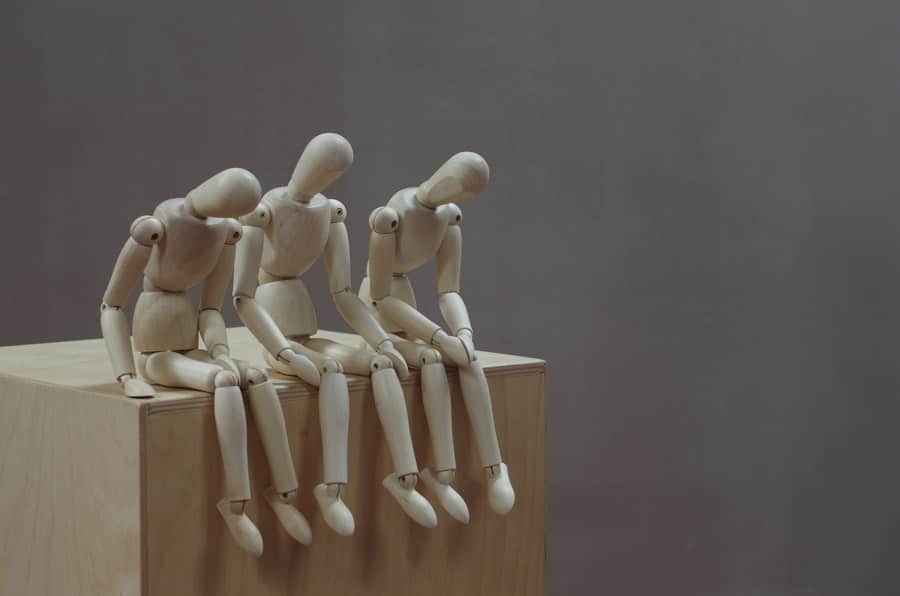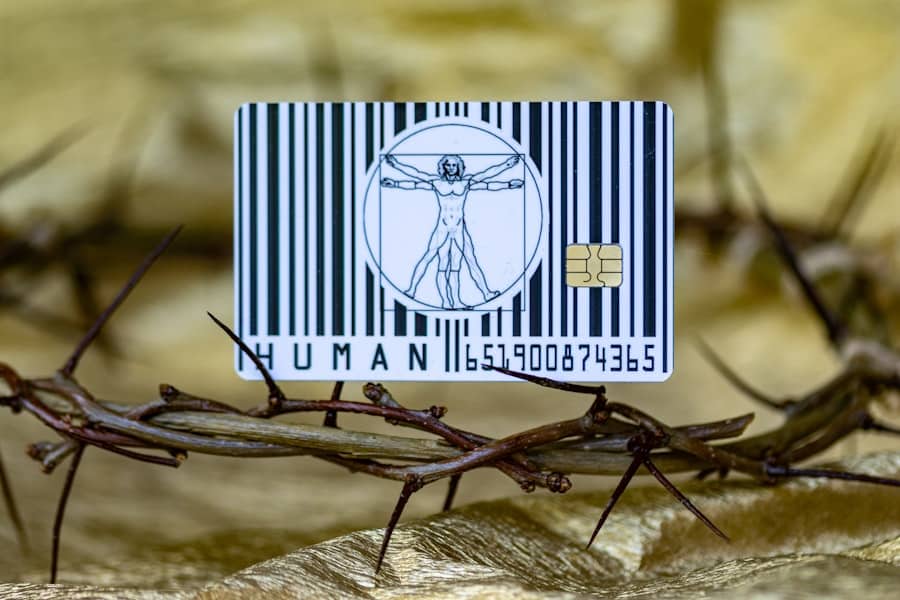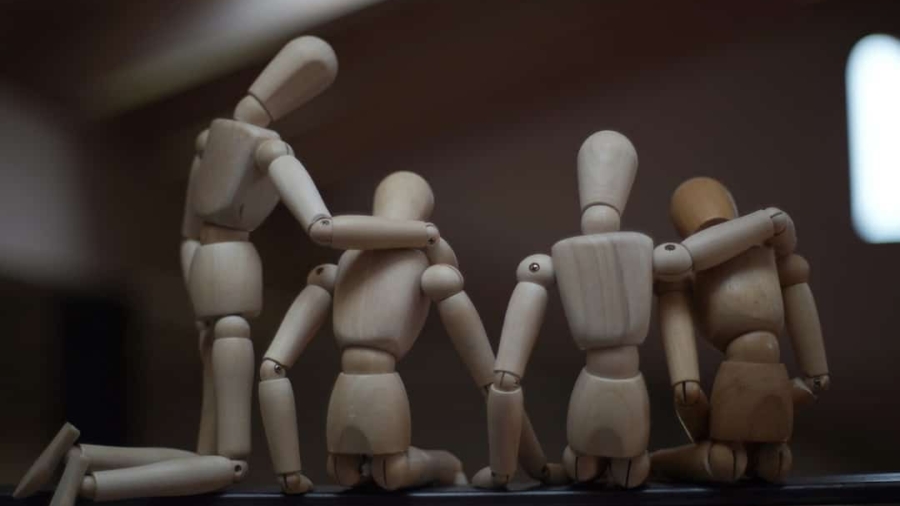The advent of artificial intelligence (AI) has ushered in a new era of collaboration between humans and machines, fundamentally altering the landscape of creative production. This partnership is not merely a tool-and-user relationship; it represents a synergistic interaction where both entities contribute unique strengths to the creative process. As AI technologies evolve, they are increasingly capable of performing tasks that were once thought to be the exclusive domain of human creativity, such as generating music, writing stories, and creating visual art.
This shift raises intriguing questions about the nature of creativity itself and the role of human intuition and emotion in a world where machines can mimic these qualities. Human-AI collaboration is characterized by its potential to enhance creativity rather than replace it. By leveraging AI’s computational power and data analysis capabilities, creators can explore new avenues of expression and innovation.
For instance, AI can analyze vast datasets to identify trends and patterns that may not be immediately apparent to human creators. This capability allows artists, writers, and musicians to push the boundaries of their work, experimenting with styles and techniques that they might not have considered otherwise. As we delve deeper into the implications of this collaboration, it becomes clear that understanding its impact on creative production is essential for navigating the future of artistic expression.
Key Takeaways
- Human-AI collaboration is becoming increasingly prevalent in creative production, with AI tools being used to enhance human creativity and productivity.
- AI has the potential to significantly impact creative production by automating repetitive tasks, generating new ideas, and providing valuable insights.
- The advantages of human-AI collaboration in creative production include increased efficiency, improved quality, and the ability to tackle complex tasks.
- However, challenges and limitations such as ethical concerns, biases in AI algorithms, and the need for human oversight must be carefully considered in human-AI collaboration.
- Ethical considerations in human-AI collaboration include issues of privacy, transparency, accountability, and the potential impact on employment.
The Impact of AI on Creative Production
AI’s influence on creative production is multifaceted, affecting various domains such as music, literature, visual arts, and design. In music, AI algorithms can compose original pieces by analyzing existing works and identifying patterns in melody, harmony, and rhythm. For example, OpenAI’s MuseNet can generate compositions in the style of renowned composers or even blend genres in innovative ways.
This capability not only provides musicians with new material but also challenges traditional notions of authorship and originality in music creation.
Writers can use these tools to brainstorm ideas, develop plotlines, or even draft entire chapters.
The implications for storytelling are profound; authors can collaborate with AI to explore narrative possibilities that might have remained unexplored in a purely human-driven process. However, this raises questions about the authenticity of the narrative voice and the extent to which AI-generated content can be considered genuinely creative.
Advantages of Human-AI Collaboration in Creative Production

One of the most significant advantages of human-AI collaboration is the enhancement of productivity. By automating repetitive tasks or providing inspiration through data-driven insights, AI allows creators to focus on higher-level conceptual work. For instance, graphic designers can use AI-powered tools to generate design variations quickly, enabling them to iterate more rapidly and refine their ideas without getting bogged down in technical details.
This efficiency not only accelerates the creative process but also opens up opportunities for experimentation that may have been too time-consuming or resource-intensive in a traditional setting. Moreover, human-AI collaboration fosters inclusivity in creative production. AI tools can democratize access to creative resources, allowing individuals who may lack formal training or experience to engage in artistic endeavors.
For example, platforms that utilize AI for music composition or visual art generation enable aspiring creators to produce work that they might not have been able to create independently. This democratization can lead to a richer diversity of voices and perspectives in the creative landscape, as more individuals are empowered to express themselves through art.
Challenges and Limitations of Human-AI Collaboration
Despite its many advantages, human-AI collaboration is not without challenges and limitations. One significant concern is the potential for over-reliance on AI tools, which may lead to a dilution of human creativity. As creators become accustomed to using AI for inspiration or assistance, there is a risk that they may inadvertently stifle their own imaginative processes.
The reliance on algorithms could result in homogenized outputs that lack the unique flair that comes from individual human expression. Additionally, the integration of AI into creative workflows raises questions about intellectual property rights and ownership. When an AI system generates a piece of art or music, who holds the rights to that creation?
This ambiguity can create legal challenges for artists and producers who wish to monetize their work. Furthermore, there is a concern about the ethical implications of using AI-generated content without proper attribution or acknowledgment of its origins. These challenges necessitate ongoing discussions within the creative community about how to navigate the complexities of authorship in an age where machines play an increasingly prominent role in artistic production.
Ethical Considerations in Human-AI Collaboration
The ethical considerations surrounding human-AI collaboration are complex and multifaceted. One primary concern is the potential for bias in AI algorithms, which can inadvertently perpetuate stereotypes or reinforce existing inequalities in creative representation. For instance, if an AI system is trained on datasets that lack diversity, it may produce outputs that reflect those biases, leading to a narrow portrayal of certain groups or ideas.
Creators must be vigilant about the data they use to train AI systems and actively seek to mitigate bias in order to promote inclusivity and fairness in their work. Another ethical consideration involves transparency and accountability in AI-generated content. As AI systems become more sophisticated, it can be challenging for audiences to discern whether a piece of art or writing was created by a human or an algorithm.
This lack of transparency raises questions about authenticity and trust in creative works.
By fostering transparency, they can help maintain public trust while encouraging meaningful discussions about the implications of AI in art.
Successful Examples of Human-AI Collaboration in Creative Production

Numerous successful examples illustrate the potential of human-AI collaboration across various creative fields. In visual arts, the collaboration between artist Refik Anadol and AI has resulted in stunning installations that blend data visualization with artistic expression. Anadol’s work often involves training algorithms on vast datasets related to architecture or nature, allowing him to create immersive experiences that challenge viewers’ perceptions of space and time.
His projects exemplify how AI can serve as a collaborator rather than merely a tool, expanding the boundaries of what is possible in contemporary art. In literature, the partnership between authors and AI has yielded intriguing results as well. The novel “1 the Road,” co-authored by Ross Goodwin and an AI system named Benjamin, showcases how machine learning can contribute to narrative development.
The book was generated during a road trip across America, with the AI processing real-time data from various sources to create a unique story that reflects the journey’s experiences. This project highlights how human intuition and machine learning can intertwine to produce innovative literary works that challenge traditional storytelling conventions.
The Future of Human-AI Collaboration in Creative Production
Looking ahead, the future of human-AI collaboration in creative production appears promising yet complex. As technology continues to advance, we can expect even more sophisticated AI tools that enhance creativity while preserving the essence of human expression. The integration of augmented reality (AR) and virtual reality (VR) with AI could revolutionize how artists create and share their work, allowing for immersive experiences that engage audiences on multiple sensory levels.
Moreover, as society grapples with the implications of AI in creative fields, there will likely be an increased emphasis on ethical frameworks and guidelines governing its use. Artists and technologists will need to collaborate closely to establish best practices that prioritize inclusivity, transparency, and accountability in their work. This collaborative approach will be essential for ensuring that human creativity remains at the forefront while harnessing the transformative potential of AI.
Tips for Effective Human-AI Collaboration in Creative Production
To maximize the benefits of human-AI collaboration in creative production, creators should consider several key strategies. First and foremost, it is crucial to maintain a clear understanding of the strengths and limitations of AI tools. By recognizing what AI can do well—such as analyzing data or generating variations—creators can effectively leverage these capabilities while ensuring that their unique voice remains central to the process.
Additionally, fostering an iterative approach can enhance collaboration between humans and AI. Creators should view their interactions with AI as a dynamic dialogue rather than a one-sided transaction. By experimenting with different prompts or inputs and refining outputs based on personal insights, artists can cultivate a more meaningful partnership with AI systems.
Finally, staying informed about advancements in AI technology is essential for creators looking to integrate these tools into their workflows effectively. Engaging with communities focused on AI in art and participating in discussions about ethical considerations will help artists navigate this evolving landscape while contributing positively to the discourse surrounding human-AI collaboration in creative production.
In exploring the dynamic landscape of creative production, the article “The Role of Human-AI Collaboration in Creative Production” delves into how artificial intelligence is transforming artistic processes and enhancing human creativity. A related piece that complements this discussion is the article on Ideas R Us Software: Free Studio3 to SVG Converter. This article highlights a practical tool that aids designers and artists in converting their creative ideas into scalable vector graphics, showcasing a tangible example of how technology can support and streamline creative workflows. By integrating such tools, creatives can focus more on the conceptual aspects of their work, while AI and software handle the technical intricacies, fostering a more efficient and innovative production environment.
FAQs
What is human-AI collaboration in creative production?
Human-AI collaboration in creative production refers to the partnership between human creators and artificial intelligence technologies to enhance and streamline the creative process. This collaboration involves using AI tools and algorithms to assist human creators in tasks such as idea generation, content creation, and decision-making.
How does human-AI collaboration benefit creative production?
Human-AI collaboration in creative production offers several benefits, including increased efficiency, improved productivity, access to advanced data analysis and pattern recognition, and the ability to generate new and innovative ideas. AI can also help automate repetitive tasks, freeing up human creators to focus on more complex and strategic aspects of the creative process.
What are some examples of human-AI collaboration in creative production?
Examples of human-AI collaboration in creative production include using AI-powered tools for image and video editing, music composition, writing assistance, and predictive analytics for audience engagement. Additionally, AI can be used to analyze large datasets to identify trends and patterns that can inform creative decision-making.
What are the potential challenges of human-AI collaboration in creative production?
Challenges of human-AI collaboration in creative production may include concerns about job displacement, ethical considerations related to AI-generated content, and the need for human creators to adapt to new technologies and workflows. Additionally, ensuring the responsible and ethical use of AI in creative production is an ongoing challenge for the industry.

